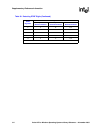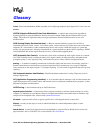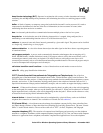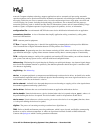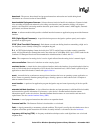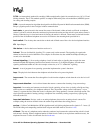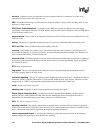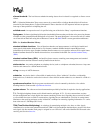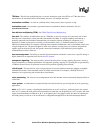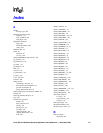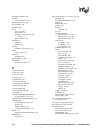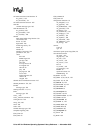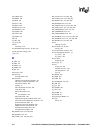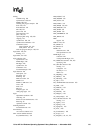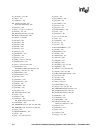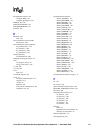
550 Voice API for Windows Operating Systems Library Reference — November 2003
TDM bus: Time division multiplexing bus. A resource sharing bus such as the SCbus or CT Bus that allows
information to be transmitted and received among resources over multiple data lines.
termination condition: An event or condition which, when present, causes a process to stop.
termination event: An event that is generated when an asynchronous function terminates. See also
asynchronous function.
time division multiplexing (TDM): See TDM (Time Division Multiplexing).
time slot: The smallest, switchable data unit on a TDM bus. A time slot consists of 8 consecutive bits of data.
One time slot is equivalent to a data path with a bandwidth of 64 Kbps. In a digital telephony environment, a
normally continuous and individual communication (for example, someone speaking on a telephone) is (1)
digitized, (2) broken up into pieces consisting of a fixed number of bits, (3) combined with pieces of other
individual communications in a regularly repeating, timed sequence (multiplexed), and (4) transmitted serially over
a single telephone line. The process happens at such a fast rate that, once the pieces are sorted out and put back
together again at the receiving end, the speech is normal and continuous. Each individual, pieced-together
communication is called a time slot.
time slot assignment: The ability to route the digital information contained in a time slot to a specific analog or
digital channel on an expansion board. See also device channel.
transparent signaling: The mode in which a network interface device accepts signaling data from a resource
device transparently, or without modification. In transparent signaling, outgoing T-1 signaling bits are generated by
a TDM bus resource device. In effect the resource device performs signaling to the network.
virtual board: The device driver views a single physical voice board with more than four channels as multiple
emulated D/4x boards. These emulated boards are called virtual boards. For example, a D120JCTLS has 12
channels of voice processing and contains three virtual boards.
voice processing: The science of converting human voice into data that can be reconstructed and played back at
a later time.
voice system: A combination of expansion boards and software that lets you develop and run voice processing
applications.
wink: In T-1 or E-1 systems, a signaling bit transition from on to off, or off to on, and back again to the original
state. In T-1 systems, the wink signal can be transmitted on either the A or B signaling bit. In E-1 systems, the wink
signal can be transmitted on either the A, B, C, or D signaling bit. Using either system, the choice of signaling bit
and wink polarity (on-off-on or off-on-off hook) is configurable through DTI/xxx board download parameters.



